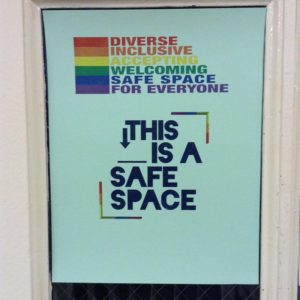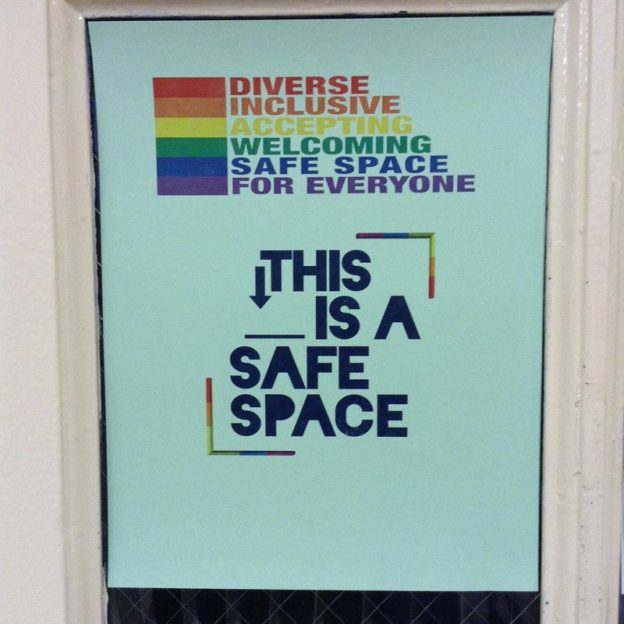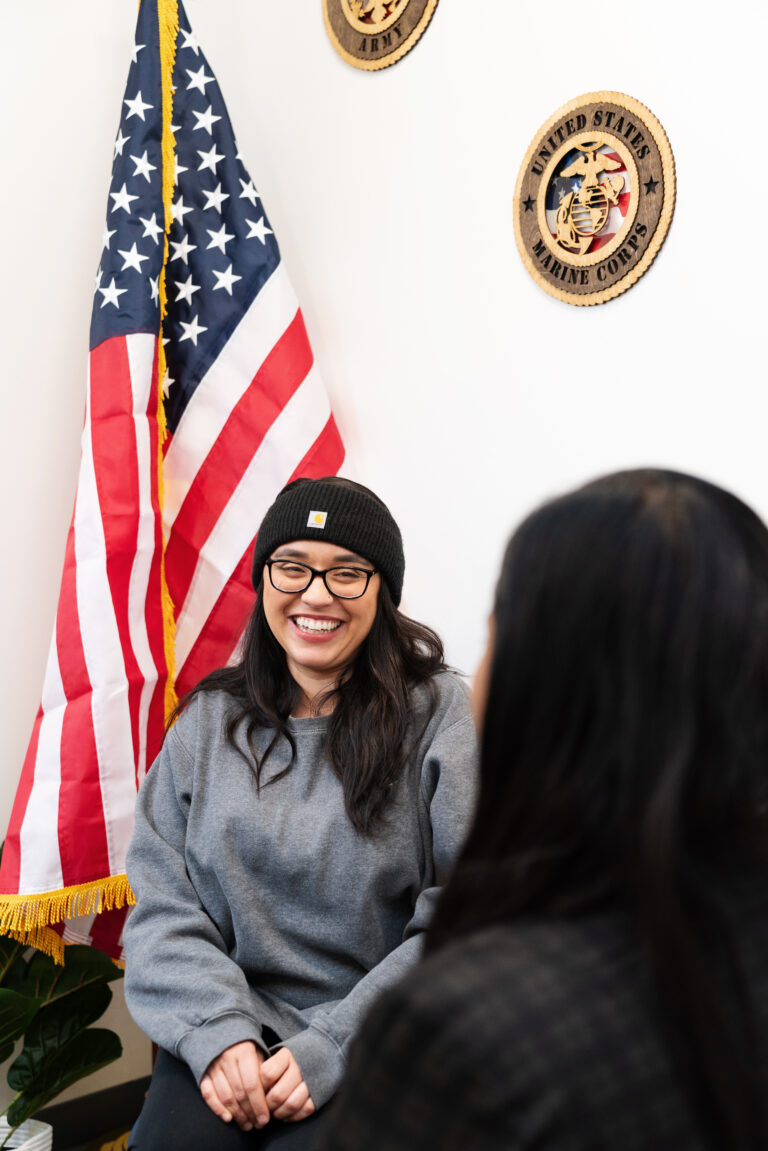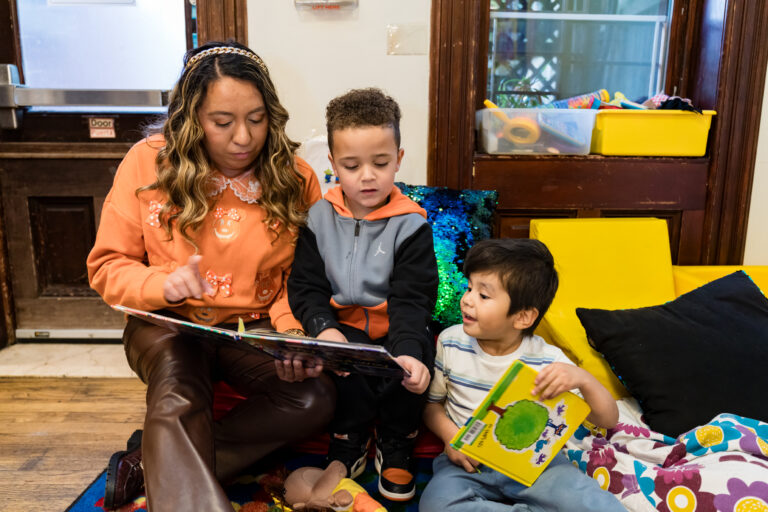And an Offer to Help Schools Implement One of Them
 Just in time for Mental Health Awareness Month, CNN reported last weekend on an alarming rise in children hospitalized with suicidal thoughts or actions. To those of us in the mental health field, the news was troubling and disheartening, but not surprising. At The Child Center of NY, which has been providing mental health services to children and families for more than 60 years, we’ve seen the increase firsthand across our clinics and other behavioral health programs. Thankfully, we’ve also seen what works to counter it: more mental health services in the place where kids spend most of their day — their schools — offered early, and on every level. This ideally takes the form of school-based mental health clinics, but it can start with steps that virtually every school can take right now.
Just in time for Mental Health Awareness Month, CNN reported last weekend on an alarming rise in children hospitalized with suicidal thoughts or actions. To those of us in the mental health field, the news was troubling and disheartening, but not surprising. At The Child Center of NY, which has been providing mental health services to children and families for more than 60 years, we’ve seen the increase firsthand across our clinics and other behavioral health programs. Thankfully, we’ve also seen what works to counter it: more mental health services in the place where kids spend most of their day — their schools — offered early, and on every level. This ideally takes the form of school-based mental health clinics, but it can start with steps that virtually every school can take right now.
If you haven’t heard about school–based mental health clinics (SBMHCs), you’re not alone, but they are gaining traction in New York City. The Child Center currently offers school-based mental health clinics in eight NYC schools. All services take place in school “wellness centers,” emphasizing the fact that mental health is just another (crucial) part of overall wellness.
SBMHCs offer services in three tiers. First, we work with schools to promote social-emotional wellness. We also conduct professional development workshops with faculty and staff so they can recognize mental health warning signs, constructively deescalate situations when a child is upset, and learn how to communicate with students in a way that invites more communication as the basis for a relationship based on mutual connection and respect. We know that feeling connected to one or two adults at school makes a key difference in a child’s overall well-being, over the long haul.
The second tier of SBMHCs includes skill-building groups for students who may not have a mental health diagnosis but need extra support. For example, we have groups for immigrants (or children of immigrants) who are having trouble assimilating, and a group for LGBTQ youth.
The third tier involves psychotherapy for kids who have a mental health diagnosis. By offering therapy in the neutral space of schools, SBMH staff reach young people who would otherwise refuse therapy or to go to a clinic. National statistics bear this out: In nationwide studies, 96 percent of youth referred to school-based counseling followed through, as compared to 13 percent who were referred to outside clinics. That’s an incredible difference. And according to the NYC Department of Education, studies of schools with SBMHCs report a significant decline in disciplinary referrals, increased classroom attentiveness, decreased distractive behaviors, significantly less rebellious behavior, less victimization, increased positive peer associations, improved grades, and fewer special education referrals. Our own experience shows the same, and in high schools where we have these wellness centers, we aren’t seeing the rise in hospitalizations that made for such a devastating headline.
When we start offering SBMHCs in elementary schools, we’re seeing positive consequences in ways that haven’t even been studied yet. For example, one of the biggest factors adversely affecting high school graduation rates is that kids just aren’t going to school. In one district where we work, Queens’ District 27, 46 percent — close to half — of students are chronically absent or not attending. Sadly, this trend often starts in the youngest grades. In the elementary schools we serve, children are getting up in the middle of class and leaving their classrooms, roaming the halls. What usually happens when a kid is found wandering the halls is that the assistant principal, or other member of the administration tasked with disciplinary problems, is called. But of course, the assistant principal has other things to do, and so the kid gets returned to class, with no real, lasting change taking place. The child probably will continue to leave class — or, when he or she gets older, just stop going to school — which, in turn, means that the child is not learning, and so is falling behind academically. The more behind you are, the harder it is to catch up, and it doesn’t take long before a “why bother” mindset takes over — and we have tragically squandered a child’s potential.
At the schools where we offer SBMHCs, children still wander the halls — but I have actually seen them wander right into our wellness centers; they know, on some level, that they need support, and they know where to get it.
For those who don’t wander in to our centers on their own, we have dedicated staff who bring them there and work with them (and their families) holistically on a social, emotional, and cognitive level — stopping problems before they start.
The NYC Department of Education has published a brochure about starting a SBMHC that’s worth a read. While that’s a goal I’d like to see every school set, there are also two things any school can do right now to head off the kind of alarming statistics we’re going to be seeing a lot of this month.
Start by establishing a school culture where positive student-teacher relationships are a priority, parents feel welcome, and children feel valued and engaged. If you’re not sure how to begin, consider contacting Ramapo for Children, an agency that trains teachers and administration on changing their school climate. Bring in guest speakers on the subject, and be open to outside-the-box, evidence-based strategies. For example, one of our schools brought in a youth advocate, Ramandeep Kaur, who trained in mindfulness and meditation at the Spirituality Mind Body Institute at Columbia University, to introduce mindfulness practices. It was ridiculously popular, and soon classes were requesting her. Teachers who began class this way reported better attentiveness and behavior by their students. When Raman announced a few weeks ago that she was moving to California, students proactively inquired if they could do the exercises with her remotely.
Another thing that is absolutely vital, inexpensive, and something schools can get the ball rolling on right now is getting their staff trained in mental health first aid. This is a national public education program that teaches recognition of risk factors, builds an understanding of early intervention, and provides invaluable guidance on helping youth in crisis. The Child Center of NY has provided this lifesaving course to teachers, youth advocates, and other groups who work with young people on a daily basis, and we’ve gotten excellent feedback, the most common being that the course should be mandated. That’s because we all know someone who is struggling with mental illness. However, just like with LGBTQ youth, most times we aren’t aware of it. After each training, my staff commonly have at least one participant come up to them and say, “I know a kid who is showing these symptoms…. I thought it was normal, sullen teenage behavior, but now I know the difference — and how to help.”
Considering that one out of five adolescents has a diagnosable mental health disorder, it’s high time to stop denying it or stigmatizing it and focus on recognizing it and offering support. The Child Center feels so strongly about this, that we are offering free mental health first aid training to staff at Queens schools or other youth-related groups, particularly over the summer [Update, 9/2/19: While we are no longer offering this promotion, please call us for further information at 718-659-4000 ext. 2439.] People who complete this course will have tools they can use to really impact the wellness of their school, and of countless individual children.
Micki Segel, LCSW-R
Associate Director of Youth Development,
School-Based Mental Health







